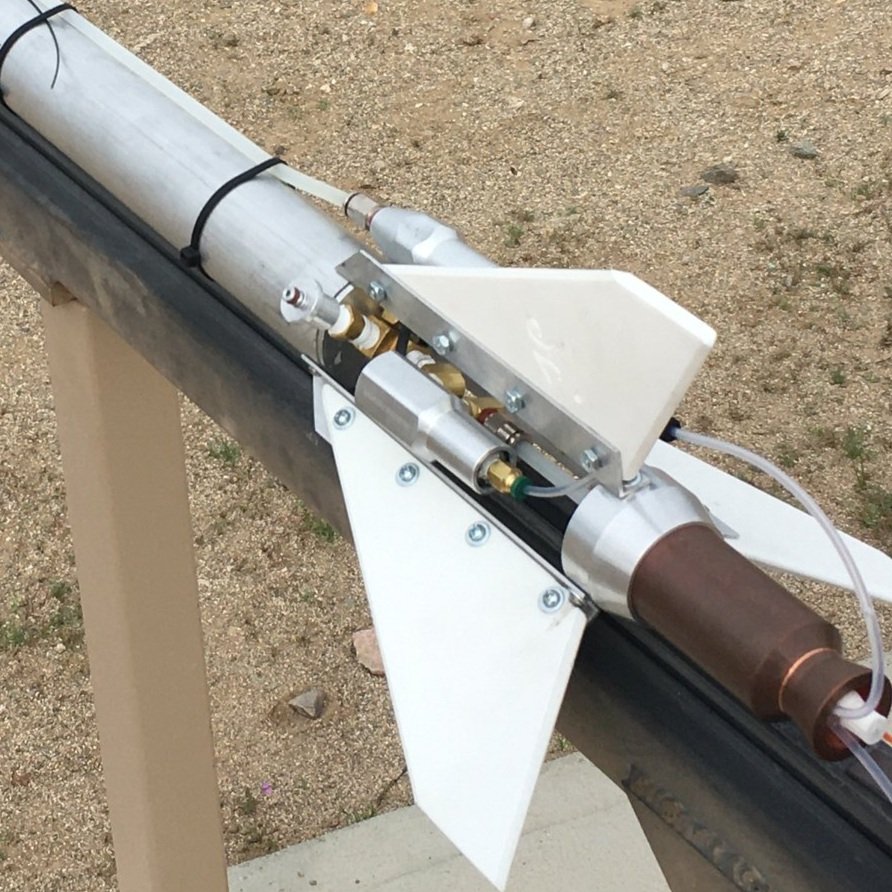Quick Disconnects
A quick disconnect (QD or QDC) is a fitting used to fill a flight tank with pressurized fluid from a ground supply. The defining characteristic is that it can separate before or during launch - it is the interface between rocket and ground support equipment (GSE).
The separation mechanism can be either active or passive. An active separation would involve some kind of actuator which pulls the fitting before launch; this has the advantage of ensuring that all lines are disconnected before committing to ignition, but adds the complication of needing to provide control and confirmation of disconnect.
A passive QD uses the launch itself to achieve separation. One of the simplest methods is to route the tube in question directly underneath the nozzle exit so that it is burned away at takeoff. This has the benefit of needing zero extra parts, but can be unreliable depending on the tube and rocket. Another method is the QD release puller, was used on all Half Cat launches. The idea behind the release puller is to hold onto the release ring of an off-the-shelf QD (with a clamp anchored to the ground) and allow the rest of the body to move. While good in theory, Half Cat’s takeoff was so violent that it always broke the anchor and failed to disconnect, ripping the fill line off the supply tank.
The style of QD which has shown the most success is the flange-clip. Here, the QD is made up of two custom machined pieces, male and female. The male part has an O-ring and fits into the female portion. With pressurized fluid in the line, the two pieces will be forced apart. However, a clip which slips over the flanges resists this liner force and prevents the parts from separating. Since the force is only linear, the clip needs no retention in the lateral direction.
Similarly to the release puller, the clip is anchored to the ground. At takeoff, the rocket moves upwards while the clip does not, and the QD pieces are blown apart once free of the clip. This method has the advantage of not exerting any force on the passive holder (the clip), save for a very small force trying to push the clip apart. This force is calculated by:
(Inner Area of Tube) × (Pressure of Fluid)
We have found great success using a small 3D printed clip. 1Cat/4 demonstrates a good example of a flange-clip QD.
Note: With any style of QD, there must be a check valve on the rocket side. This is to prevent the fluid from flowing back out of the tank once the rocket launches. Off-the-shelf QDs may be checking or non-checking; alternatively, you may choose to have a check valve somewhere on the rocket, between the tank and QD.




